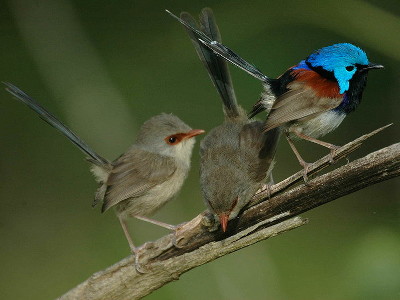Haller's law that "the proportion of the brain in the body increases as the living thing becomes smaller"

ByAbhijit Bhaduri
It is said that human brains are about 2% of their weight, but much smaller birds and insects than humans are said to have a higher percentage of brain in their weight. This law "The proportion of the brain in the body increases as the living matter becomes smaller" It seems that the law applies to many living creatures inhabiting the natural world, and that mystery includes scientific journalsScientific AmericanIs approaching.
The Genius of Pinheads: When Little Brains Rule - Scientific American
https://www.scientificamerican.com/article/the-genius-of-pinheads-when-little-brains-rule/
The world's smallest arachnid spider "Samoan Moss Spider" is a spider of extremely small size of one-third of a millimeter which is almost invisible to human eyes. In contrast, the largest spider in the world is 5 ounces (about 142 g) in weight and is about the same size as the dinner plate.
I am doing research on organisms that live in the tropicsSmithsonian Tropical Research InstituteWilliam · Ushisulo, a scientist of scientists, says that "insects and spiders have very small brains in terms of size", but spiders and insects take very complicated behaviors in such small brains I will. However, it seems that a big spider does not take more complicated behavior than a small spider.
Many scientists have doubts about how the clever creatures have developed the brain in order to perform complex tasks, but Mr. Ushsulo said "How the brain grew" Is a member of a group of scientists who are not interested and scientists in this group are keenly interested in small creatures moving more complexly than creatures with much bigger brains.
A small creature has a small brain, but when considering the ratio between the brain and the body, it seems that the ratio of the brain is larger than the larger living thing. And, surprisingly, on the earth, "we are observing the law that" the living thing becomes smaller the proportion of the brain in the body increases ". This law is called "Heller's Law", but there is no excellent knowledge about why such events occur so far, "said William Everhard, a colleague of Mr. Ushsulo Mr.

ByJames Petts
Spiders use threads to build their nests, so when you build a nest it is necessary to constantly make a decision to "find the most efficient place to fix spider's thread". Of course spiders also make mistakes, so Everhard conducted a survey as an alternative indicator to measure "spider's cognitive ability" by "the number of times you made a mistake" in the process of making a web. As a result of this survey, regardless of spider type and size, the number of mistakes making a nest is said to have been constant, and in spiders "brain size" and "proportion of brain in body size" It did not affect cognitive ability.
However, any living things such as spiders, humans, and birds apply to the law that "the smaller the living thing is, the greater the proportion of the brain becomes." If the size of the living beings decreases due to the climate and other variable influences, the brain will have a large proportion in the body and it will also take up a large proportion in terms of energy consumption. Salamander whose volume changes dramatically like an insect has evolved to have a thin skull to create a space for the brain. Whether these cases apply to humans is unknown, but the size of the human brain has also shrunk over the past 10,000 years. Summarizing these facts, Scientific American wrote that human brain shrinkage does not indicate a decline in intelligence, but rather indicates that it has become more efficient to work.

ByVeloBusDriver
Biologist Diego Ocampo who obtained a Ph.D in Miami University surveyed more than 70 birds and confirmed that Haller's law is fully protected by birds. However, he seems to have noticed that hummingbirds have their own rules in the survey.
Murasaki Kenbane Hummingbird, a kind of hummingbird, weighs 12 g and its brain was about 2.4%, but the size of Shimano de Yumi Hummingbird is about 4.8% of the body weight is said to be the brain . It seems that this number seems to obey Hawler's law at first sight, but it seems that it was extremely low numerical value when compared with the ratio of brains of other living beings. Indeed, in the case of bigger birds than Hummingbird investigated by Okampo, about 7% of their weight seemed to be the brain, and considering this, you can see that a small hummingbird has a strangely small brain.
This describes Scientific American as "a sort of deflection" born as a result of hummingbirds creating a much more efficient brain than other birds. Perhaps you think that the ratio of the brain is small because "Hummingbirds do simple actions", but Murasaki Kenbune Hummingbird, whose ratio of the brain is extremely low, is complicated to find your own food in the forest It is known that it is possible to memorize the route, and it seems that it is not "it can do simple actions because the ratio of the brain is low".

ByAnnCam
Related Posts:







